Hurricane preparation is a necessary evil if you keep your boat anywhere on the Atlantic or Gulf Coasts. You should have a plan well in advance of any storm moving into your area. We use boatus.com for our boat insurance and they provide some great tips and information to help your boat’s chances of surviving a storm. Check your insurance policy, as most will offer reductions in the named storm deductible if you take active measures to protect your boat as a storm approaches. Check out boatus.com/hurricanes to see their recommendations for storm preparation.
Location
Location will be the most important factor in determining whether your boat makes it through the storm unscathed or not. The two main choices will either be to have the boat hauled at a yard or to move it into a hurricane hole. Leaving your boat in your marina with extra lines is typically not a good choice. Marinas may also order a mandatory evacuation, so this option may not be available anyway.
Haul Out
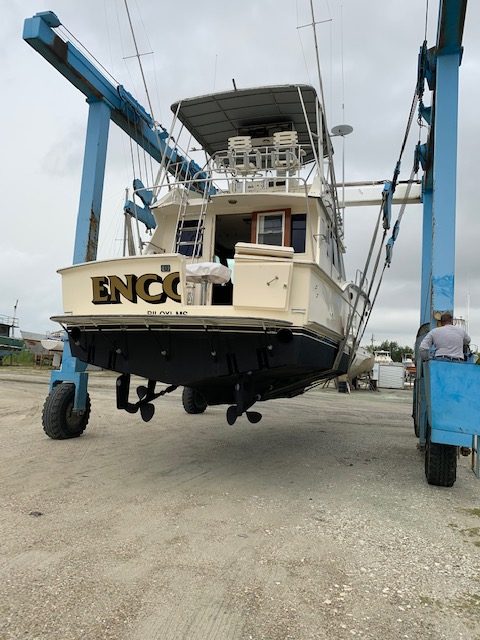
If you choose to haul your boat you need plan this option well in advance, as yards only have a limited amount of space. Contact the yard and reserve a spot. Confirm when they will begin hauling boats and when you need to be there. Also, depending on the location of the yard in relation to your boat’s normal home, there could be a lengthy voyage involved. This voyage will probably include a lot of traffic as other people will be doing the same thing that you are doing. Try to be patient with all the traffic around. We all know that there are many on the water whose boat handling, rules of the road, and etiquette skills are minimal.
Once your boat is in the yard and secure on the blocks and jack stands, do what you can to further secure it. More jack stands are better than fewer and you can chain them together to prevent their movement. Some yards will have securing devices embedded into the ground/concrete that are used to strap the boat down. Use those if they are available to you.
If it wasn’t done before you left your marina or during the voyage to the yard, now will be the time to remove or secure all of your soft goods. Bimini tops, canvas covers, seat cushions, etc. will not be around when you return after going through 100+ mph winds. Secure them if that is your only option, or remove them and place them out of the weather. Take any important documents or valuables off of the boat and keep them with you, and don’t forget to empty the fridge/freezer.
If the yard you choose to haul your boat is not concrete, you will need to be mindful for the potential erosion or wash out that can occur around the blocks and jack stands. It can either be from excessive rain or storm surge. The yard that we use, as you can see from the photo above, is sand, creating the risk of losing a jack stand when the ground under and around it washes away. Although the yard we use is great for normal haul outs and repairs, it is not the best choice to leave the boat during a storm.
Another downside to that yard during a storm is its location. It is on a large bay and very near the coast. We would feel the full effect of storm surge and wind. If you have yard options to haul your boat, choose the yard that is most inland and least susceptible to the affects of storm surge.
Hurricane Hole
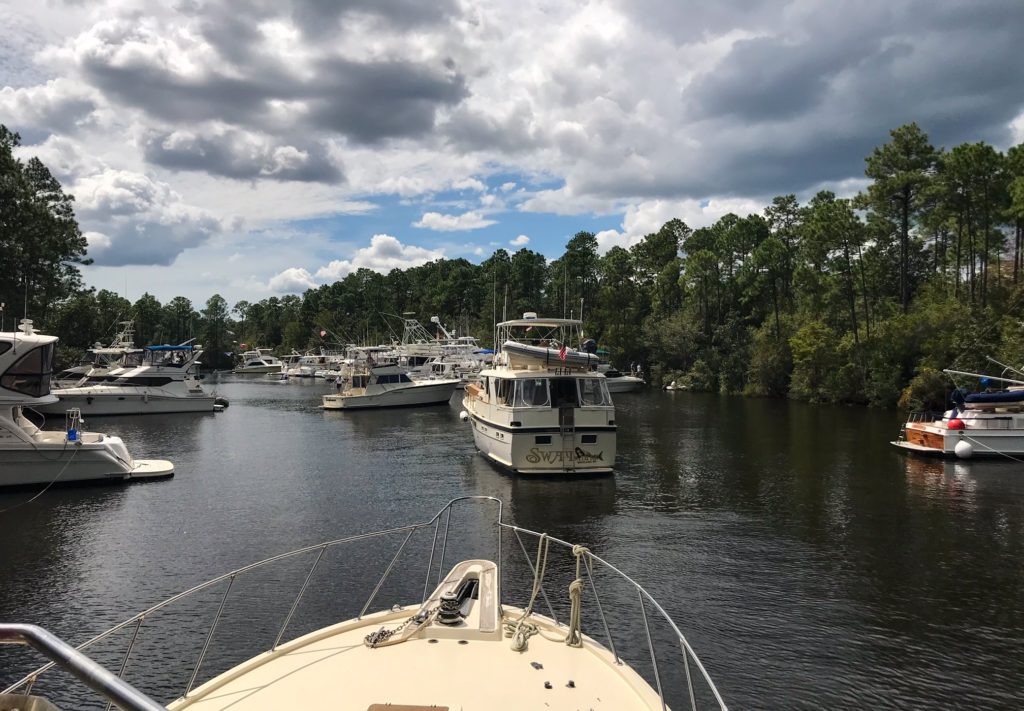
If you choose not to haul your boat or if that is not an option to you, another great choice for your boat is a hurricane hole. Some are oxbows left over from rivers that have changed course and some may be harbors/cutouts along the Intracoastal Waterway (ICW). There are many along the Atlantic and Gulf Coasts. If you are not familiar with where one is in your area, ask around the docks at your marina. If there are charter fisherman around they will be a great source of information as to what your options are and best locations.
The hurricane hole that we use is an oxbow off of the Tchoutacabouffa River and well inland. It is very well protected on all sides, and due to its location far off of the coast, less susceptible to storm surge. There is good water depth all the way in (8’+) and parts of the hole are 30′.
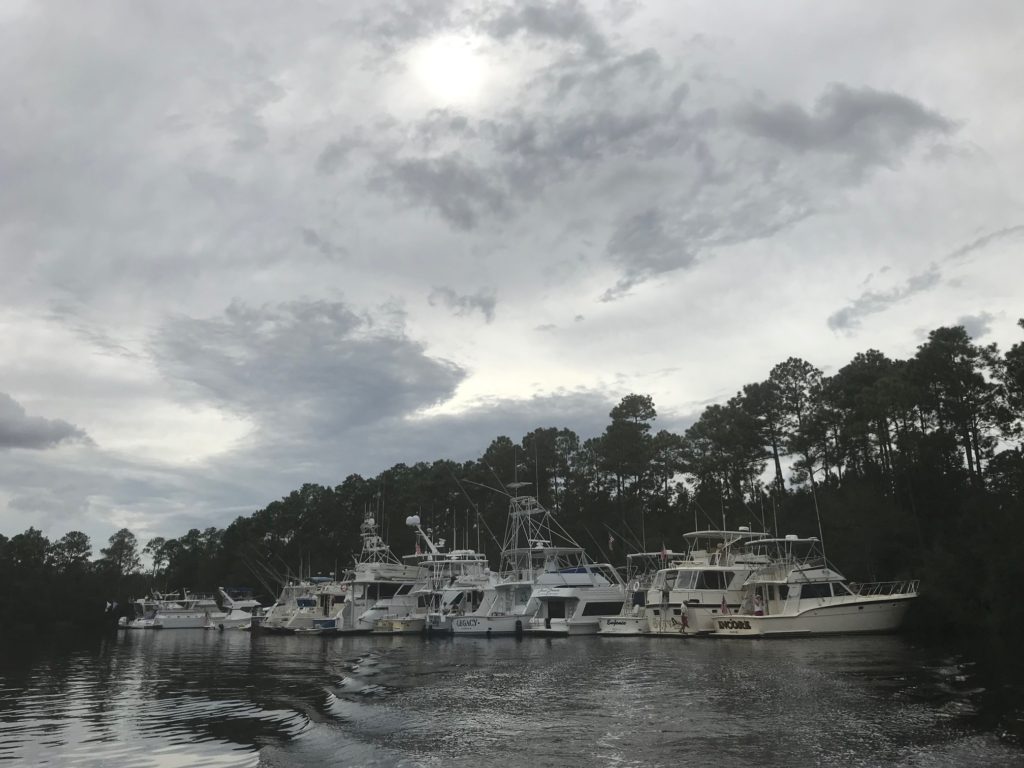
Securing
The photo above shows the mooring strategy. Boats push up to the bank and tie off to the biggest pine tree you can find and as near to the base as possible. If you have enough line double it up. The boats are all also rafted together with breast and spring lines. If you are planning on riding out a storm in a hurricane hole make sure you have plenty of fenders. Don’t worry about being the next post on @thequalifiedcaptain. More fenders are better than fewer and will protect the boats as you start moving around in the shifting winds.
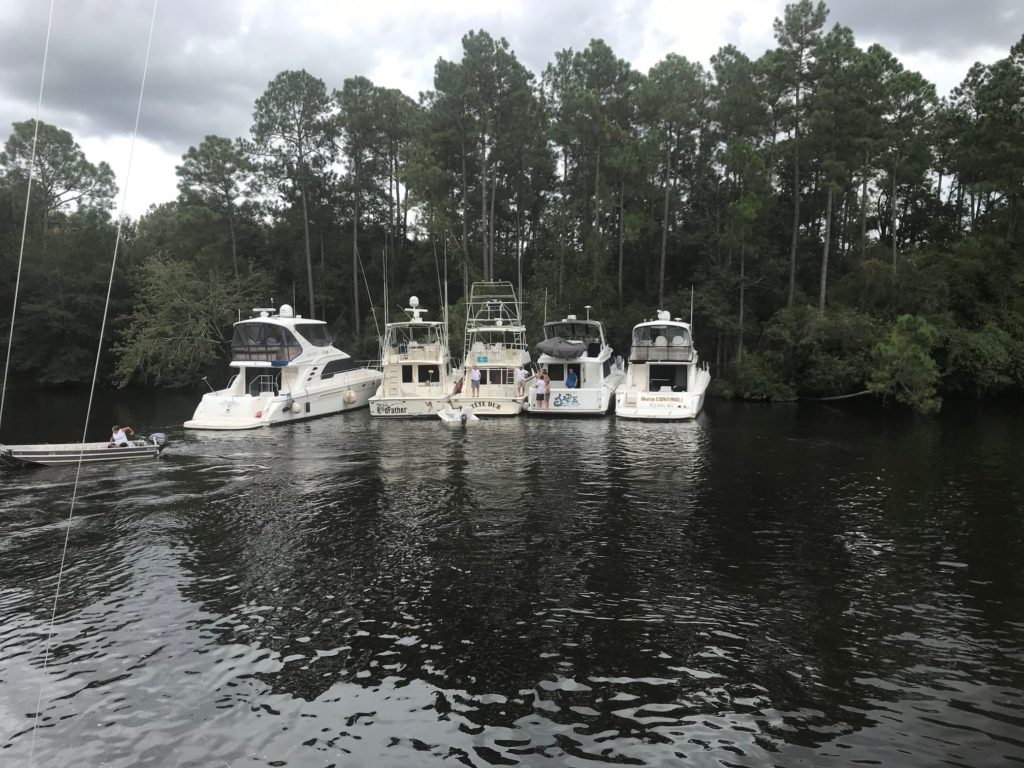
The above photo is from our back deck looking across to the other side of the hole. To secure the sterns there are a couple of options you can use. One is to put out a stern anchor. The water depth will determine the amount of scope you need. Rule of thumb is 5-7x the water depth in good conditions, 10-12x in storm conditions. So, if you’ve got 20′ of water depth you’re looking at 200′-240′ of scope. Tie a buoy or fender to the anchor as well. Other boats will know where it is if they are running stern anchors, and the buoy will also make recovery much simpler.
The second and much more preferable option is to run stern lines from your group of boats to the group of boats on the other side of the hole. Crossing the lines will help with sway (lateral) as well as surge (fore/aft) movements. With the mooring configuration of the bows of the boats tied to large pine trees, the sterns tied to the group of boats on the other side of the hole aft of you, and each group tied together with spring and breast lines, you will be very secure.
As the surge comes in you will need to slack your bow line as branches and friction will most likely prevent it from rising with you. Your other lines may not need to be tended as they are all tied off to floating objects. Many boats, including my cousin on his 42′ Hatteras rode out Hurricane Katrina unscathed in this hole. The surge from that storm in this location reached 25-30′. The height was measured from floating debris that remained in the tress after the surge subsided. The groups of boats rafted together came up with the surge and then back down as the surge subsided returning to where they were originally moored.
Hurricane Prep
Hauling out in a yard or mooring in a hurricane hole are both great options to ride out a hurricane. Do some research in your area and see which is best for you and your boat. If you are new to an area or passing through, ask some of the other boat owners what their plans are. Go visit some of the local yards and see what is available. More than anything, have a plan well in advance of a hurricane’s arrival.
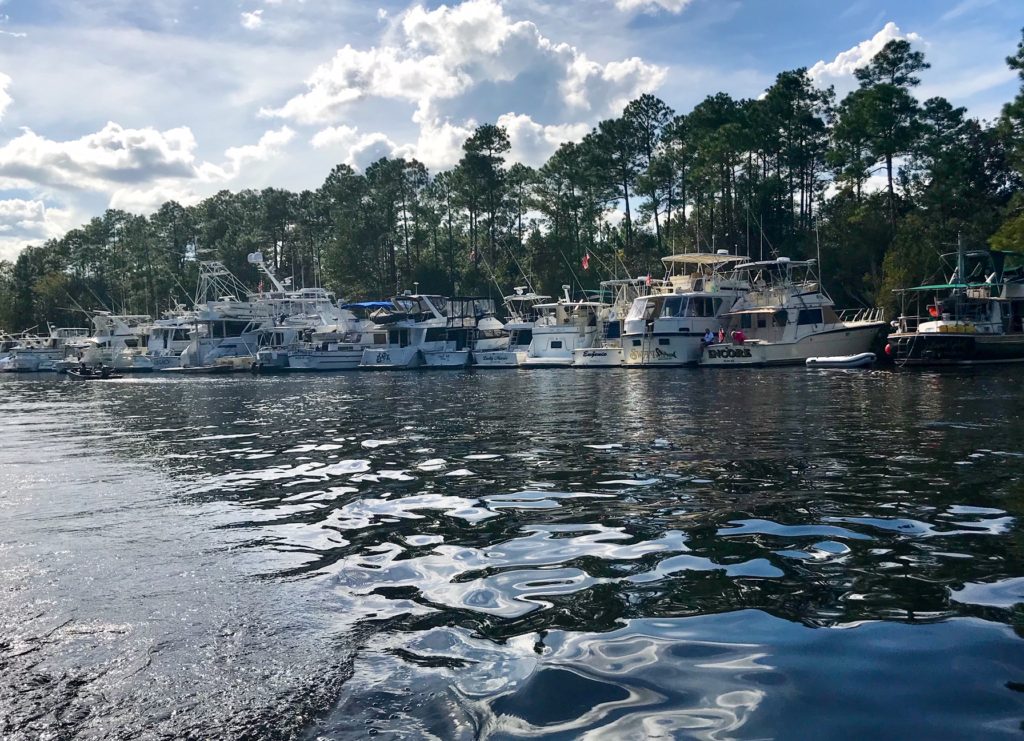
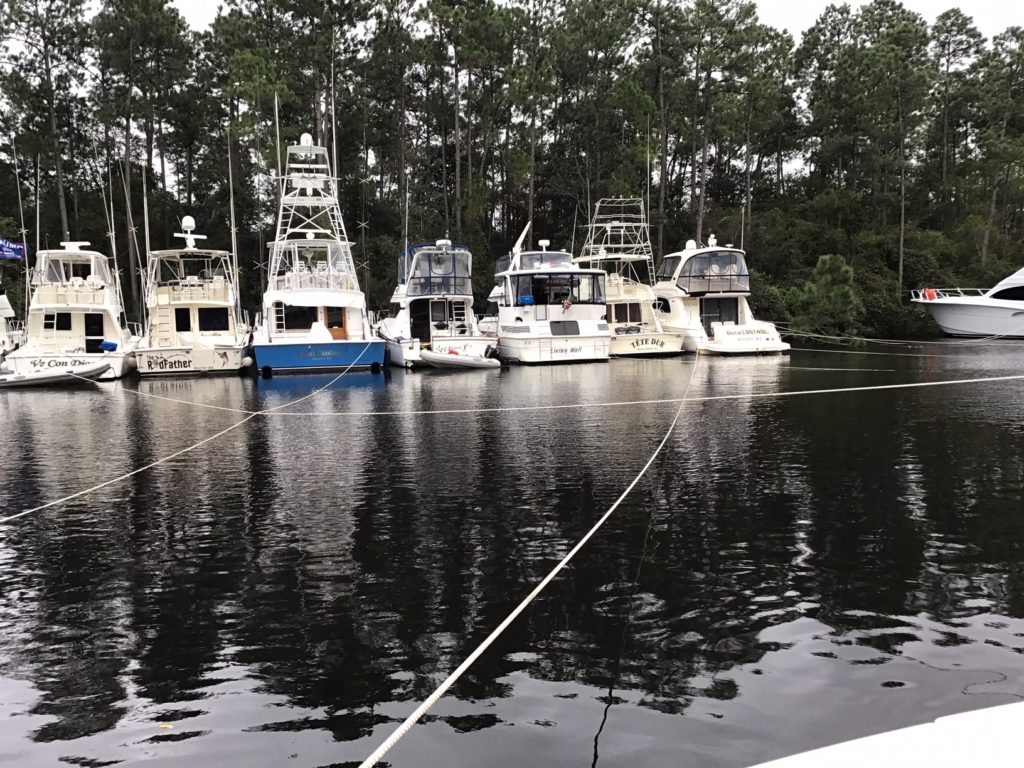
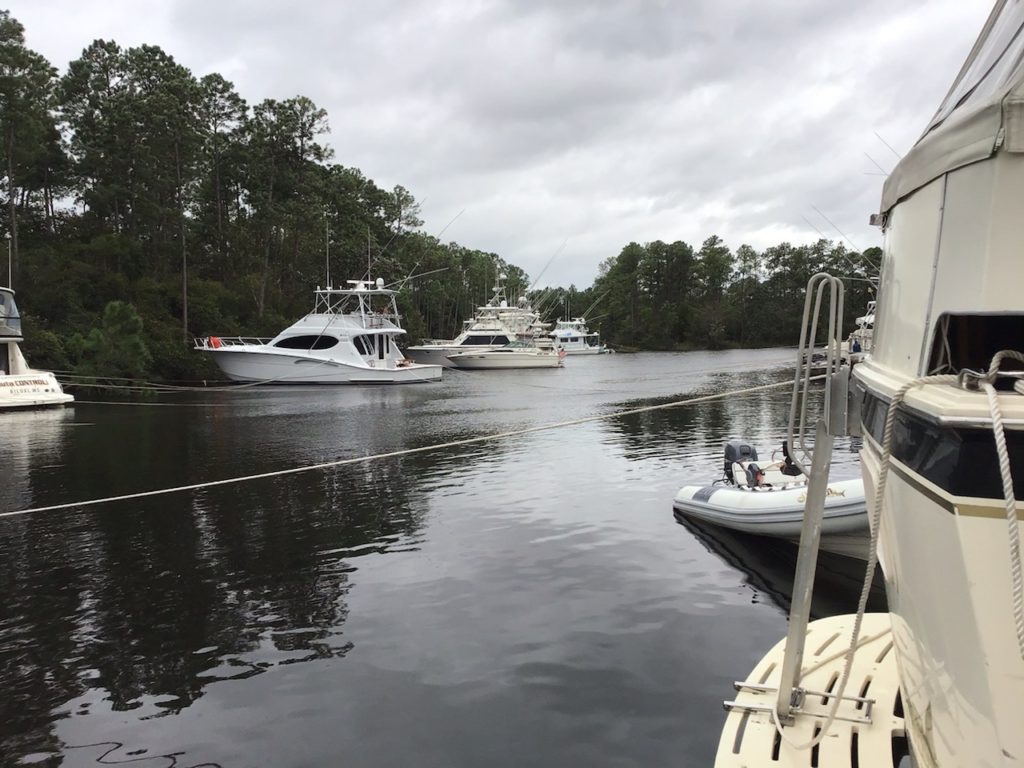
Pingback: Hatteras Convertible - Lister Petter Generator Maintenance - The Captain's Manual
Pingback: Selling a Hatteras Convertible - Encore Is No More! - The Captain's Manual